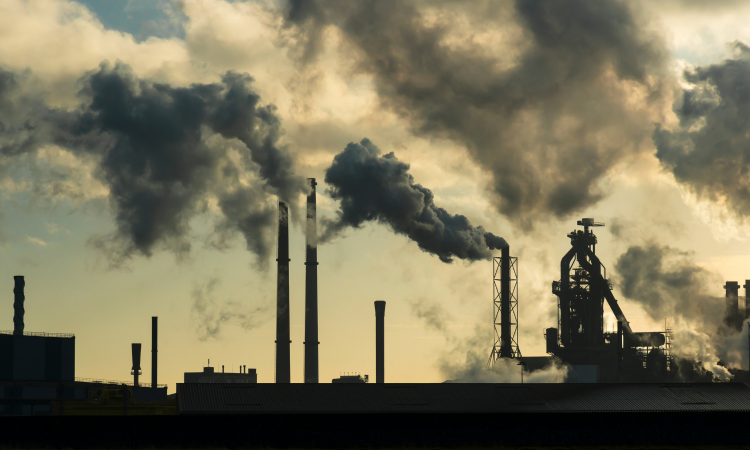
Top Methods and Technologies Used in Pollution Testing
One of the most urgent environmental issues facing the modern world is pollution. The expansion of industry, urbanization, and the increasing exploitation of natural resources have led to significant contamination of the air, water, and soil. Effective pollution testing is essential to keep an eye on, manage, and stop additional environmental harm. With the advancement of science, new methods and technologies in pollution testing have emerged, enabling faster, more accurate, and more efficient results.
In this blog, we will explore the top methods and technologies used in testing different types of pollution, covering air, water, and soil contamination.
1. Air Pollution Testing Methods and Technologies
Air pollution testing helps determine the concentration of pollutants such as carbon monoxide, nitrogen oxides, sulfur dioxide, particulate matter (PM2.5 & PM10), and volatile organic compounds (VOCs).
a) Gravimetric Method
This traditional method is used for measuring particulate matter in the air. Particles are gathered for weighing after air has passed through a filter. While it’s accurate, it is more suitable for laboratory analysis rather than real-time monitoring.
b) Continuous Emission Monitoring Systems (CEMS)
CEMS are widely used in industries to measure pollutants continuously from emission sources like chimneys and exhausts. They use gas analyzers, opacity monitors, and flow rate sensors to ensure compliance with environmental regulations.
c) Remote Sensing Technologies
Advanced tools like LIDAR (Light Detection and Ranging) and DOAS (Differential Optical Absorption Spectroscopy) allow remote measurement of air pollutants over large areas without direct sampling.
d) Low-Cost Air Quality Sensors
Portable and cost-effective sensors measure pollutants in real time. These are useful for local air quality monitoring and public awareness.
2. Water Pollution Testing Methods and Technologies
Water pollution testing identifies harmful contaminants like heavy metals, pesticides, bacteria, and industrial chemicals in water sources.
a) Spectrophotometry
To find impurities like nitrates, phosphates, and heavy metals, spectrophotometers measure the amount of light absorbed by water samples. High precision is provided by this approach, which is frequently employed in laboratories.
b) Chromatography
Gas Chromatography (GC) and High-Performance Liquid Chromatography (HPLC) are used to detect organic pollutants such as pesticides, hydrocarbons, and industrial solvents in water samples.
c) Biological Testing (Bioassays)
These involve using living organisms like fish, algae, or bacteria to measure the toxic effects of water contaminants. An understanding of ecological impact can be gained from the response of organisms.
d) Remote Water Quality Monitoring Systems
These use sensors installed in water bodies to continuously measure parameters such as pH, dissolved oxygen, turbidity, and temperature. Data is transmitted wirelessly for real-time monitoring.
3. Soil Pollution Testing Methods and Technologies
Soil contamination testing is essential for agriculture, construction, and environmental restoration projects. It detects harmful chemicals, heavy metals, and petroleum hydrocarbons.
a) Atomic Absorption Spectroscopy (AAS)
This method is highly effective for detecting heavy metals like lead, cadmium, and arsenic in soil contaminants.
b) X-Ray Fluorescence (XRF) Technology
Portable XRF devices allow rapid, on-site detection of soil contaminants without the need for extensive sample preparation.
c) Gas Chromatography–Mass Spectrometry (GC-MS)
GC-MS is used to detect organic pollutants in soil, such as pesticides, petrochemicals, and polycyclic aromatic hydrocarbons (PAHs).
d) Soil Resistivity Testing
While primarily used for geotechnical investigations, soil resistivity measurements can also help detect the presence of pollutants that alter soil conductivity.
4. Advanced Pollution Testing Technologies
With the need for faster and more accurate data, advanced technologies are transforming environmental testing:
a) Internet of Things (IoT)-Enabled Sensors
IoT devices can continuously monitor environmental parameters and send data to centralized systems for analysis and reporting.
b) Drones for Pollution Monitoring
Equipped with air and thermal sensors, drones can monitor hard-to-reach industrial zones and detect pollutant levels in real time.
c) Artificial Intelligence (AI) in Pollution Analysis
AI algorithms can process large datasets from sensors to identify pollution trends, predict risks, and recommend control measures.
d) Satellite-Based Pollution Tracking
Satellites like NASA’s Sentinel and Landsat provide data for global monitoring of air and water quality, tracking large-scale environmental changes.
5. Importance of Pollution Testing
- Compliance with Regulations: Helps industries meet environmental standards set by authorities.
- Public Health Protection: Identifies harmful pollutants that could affect communities.
- Environmental Sustainability: Encourages efforts to make the air, water, and soil cleaner.
- Early Detection: Prevents large-scale damage through timely identification of pollution.
6. Choosing the Right Pollution Testing Service
When selecting a pollution testing service provider, consider:
- Accreditation & Certification: Ensure they follow ISO and NABL standards.
- Advanced Equipment: Seek out labs that have state-of-the-art, highly accurate equipment.
- Expertise: Choose experienced professionals in environmental analysis.
- Comprehensive Reporting: Detailed reports for regulatory submission and action plans.
Testing for pollution is essential to protecting the environment and public health. From traditional gravimetric methods to AI-powered satellite monitoring, advancements in technology have made pollution detection more accurate and accessible than ever.
By leveraging the right methods and technologies, industries, governments, and communities can work together towards a cleaner, healthier, and more sustainable future.

